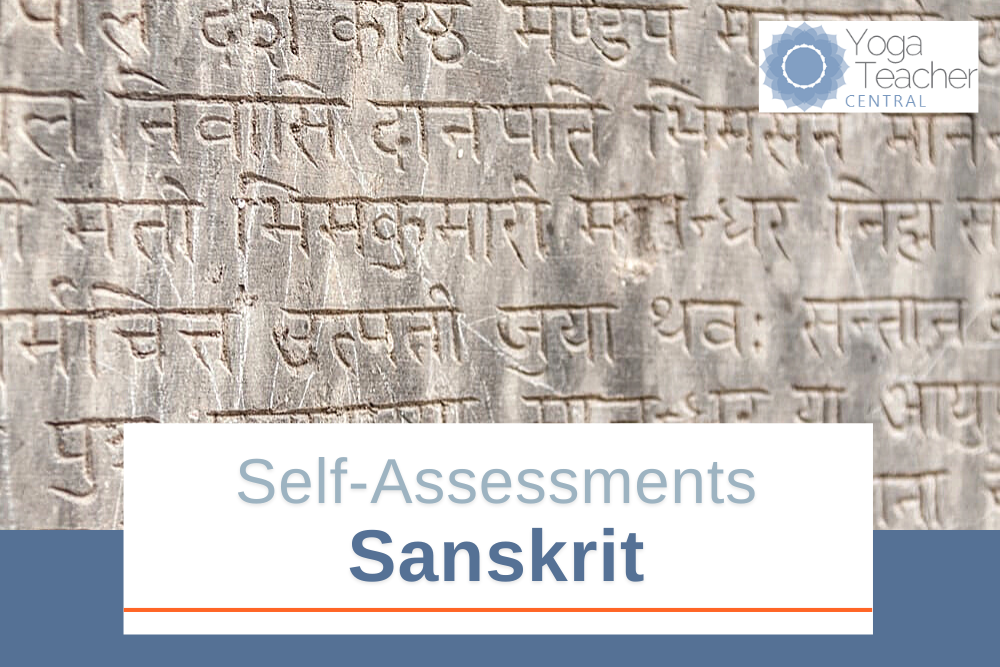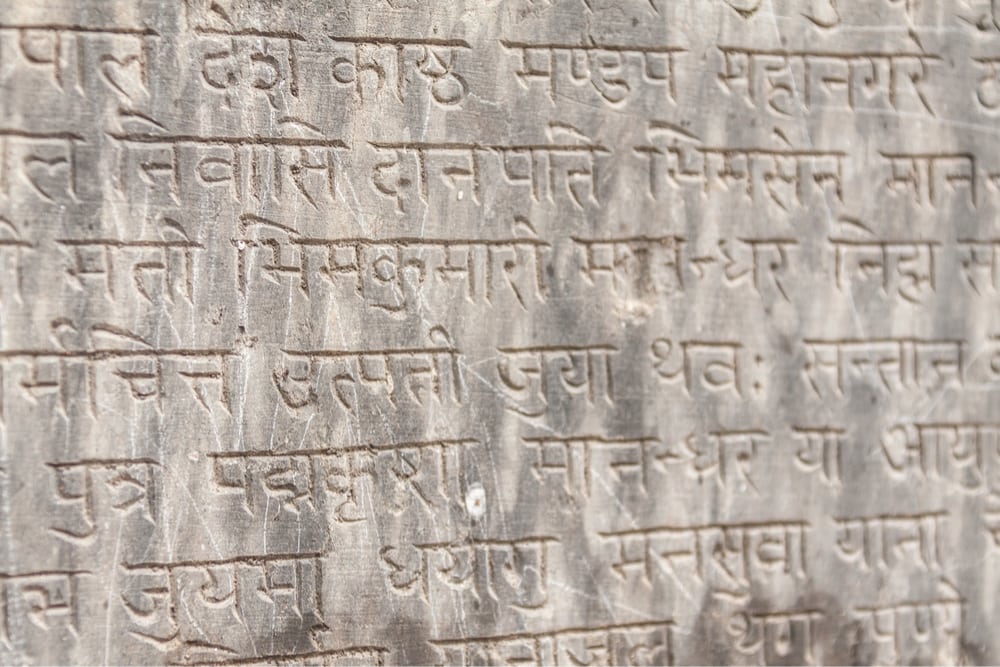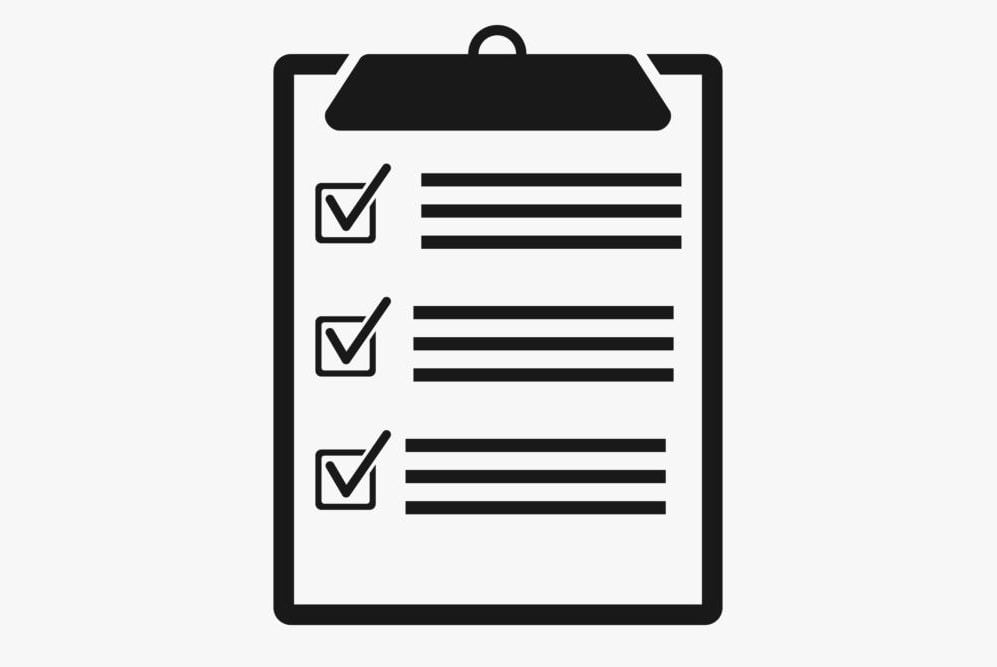
Introduction
Quickly assess your knowledge of Sanskrit Foundations, and identify gaps in your education. See below for assessments on these subjects:
- Sanskrit Introduction
- Sanskrit Study & Teaching Tips
- Sanskrit First Words
Purpose
Offer a series of free quizzes for yoga teachers to:
- Provide an effective way to assess knowledge of each of the Teaching Knowledge Standards.
- Make it easy to self-assess privately, on your own time.
- Help teachers who identify educational gaps to bolster their knowledge with accessible and practical lessons.
More Self-Assessments
For more self-assessments, see the Standards & Self-Assessment Hub.
Sanskrit Introduction

Teaching Standard
Gain an understanding of the origins of Sanskrit, its distinctive qualities, and the significance of it being the language of the original yoga texts.
Assessment
- What are some meanings of the word, “Sanskrit?”
- How does Sanskrit compare to other languages in terms of age?
- For what reason was Sanskrit developed?
- What types of words exist in Sanskrit that have no equivalents in other languages?
- What is the oldest known use of the language in written form?
- What are some ways in which Sanskrit continues to be used today?
- What are some reasons to use Sanskrit in yoga teaching?
- What are some considerations when using Sanskrit to avoid sounding exclusionary or confusing?
Sanskrit Study & Teaching Tips

Teaching Standard
Progressively develop the capability to use Sanskrit in teaching by practicing vowel pronunciation and learning common Sanskrit words that form the components of pose names.
Assessment
- What primary practice tip will help you prepare to use Sanskrit in your teaching?
- As in English, Sanskrit vowels have two pronunciations. How are these described?
- Provide the two pronunciations for the letter “a” and a word that yoga teachers often use that includes both sounds.
- Provide three strategies for efficiently learning the names and meanings of Sanskrit pose names.
- Provide five general Sanskrit words found in many pose names.
- What are the Sanskrit names for the back, front and side of the body?
- Provide the Sanskrit words for body parts found in many pose names.
- What number qualifiers are found in many pose names?
- Provide Sanskrit words for other modifiers often found in pose names: half, full, upward, downward, revolved, extended, expanded, support and unsupported.
Next Steps

- To view more self-assessments, go to the Standards & Self-Assessment Hub.
- To bolster your knowledge and be recognized as a YTC teacher, enroll in the Yoga Teacher Central Study Program (details below).
- Members, view clear and concise lessons:

In a Nutshell
- The enrollment fee is $25 and is open to Yoga Teacher Central members, past members and non-members.
- Members receive current membership benefits plus additional benefits listed below.
- Enrollment in the Study Program qualifies you for lifetime YTC Teacher status.
Benefits
Enrolling in the Study Program gives you:
- A downloadable Knowledge Standards Lesson Guide to walk you through a structured study path toward certification.
- Selection of 5 downloadable lessons of your choice (from a library of nearly 500).
- Recognition as a YTC Teacher (for life; no expiration).
- Professional marketing kit for highlighting your YTC Teacher status on social media and your website.
- Excellent preparation for taking certification exams.
Members
- Your current membership gives you online access to not only thousands of pages of organized study and teaching knowledge, but also sequence breakdowns and teaching notes, theme plans, injury cheat-sheets, and so on.
- When you enroll in the Study Program, you get these additional benefits: a Knowledge Standards Lesson Guide, selection of 5 downloadable lessons of your choice, and a professional marketing kit for highlighting your YTC Teacher status on social media and your website.

See here for information about exams, badges and certification. Get links for each exam, and for a no-risk trial exam.
We think you’ll enjoy taking the exams. The questions are well-thought-out and the subject matter is quite engaging and significant for teachers. You’ll get an inspiring teaching after answering each question. At the end of the exam, you see a summary of wrong answers and the relevant teachings, giving you a personal study guide targeted to your needs.
This is an hour well-spent!







